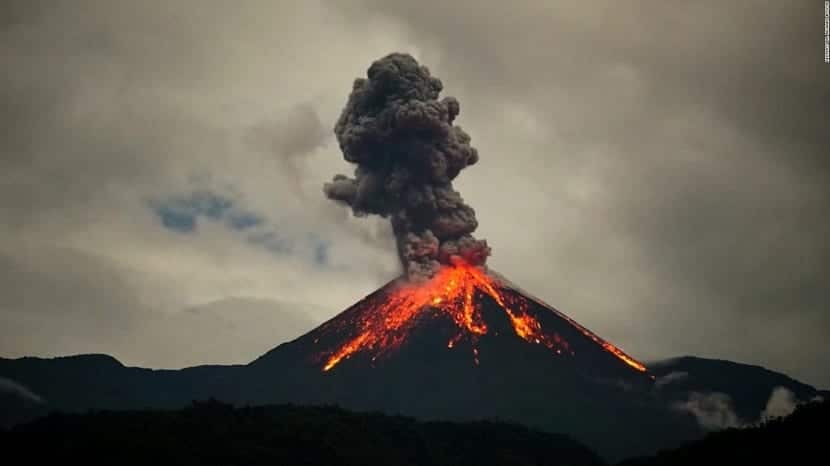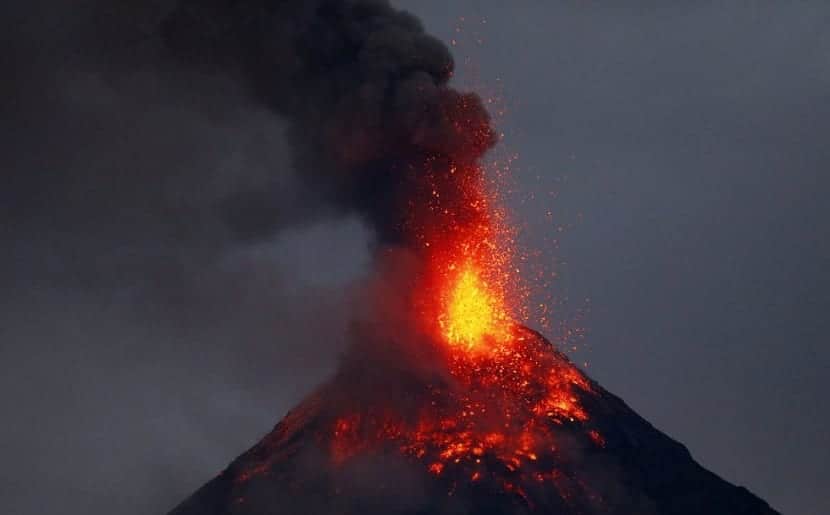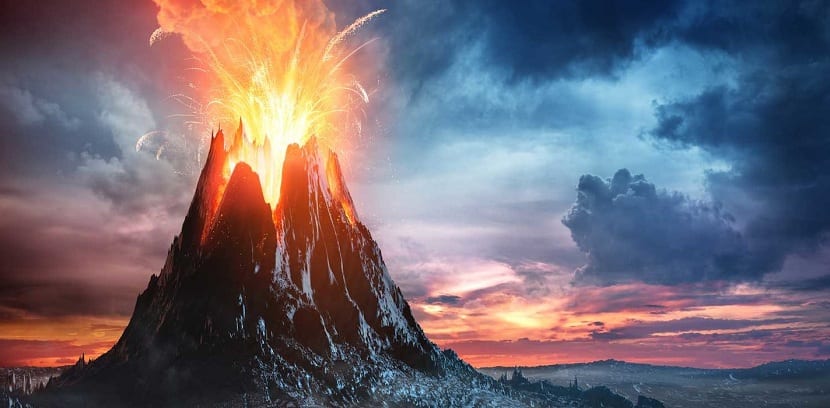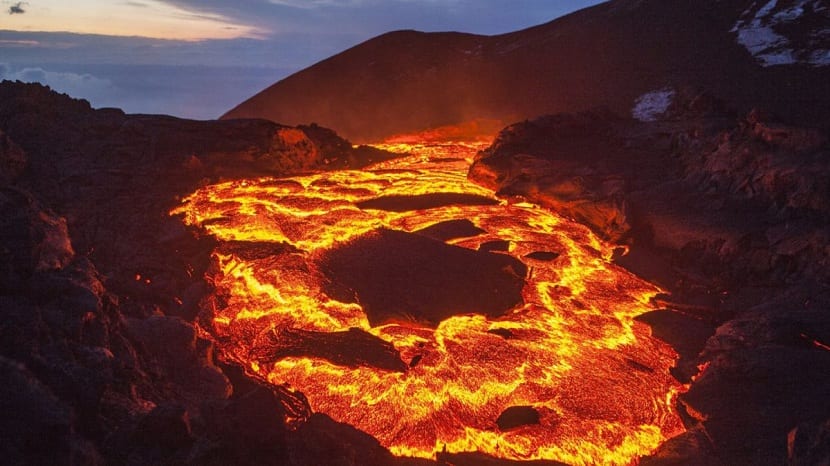
Volcanoes are very feared in many areas of the world due to their ability to destroy everything. These are reminders that our planet has to warn us that it is capable of releasing all its repressed fury at any time. For scientists, predicting a Erupting volcano it's very complicated. There are numerous variables that influence this process. Some volcanoes are more worrisome than others given their high potential for danger or because of the population they can affect.
In this post we will talk about all the characteristics of an erupting volcano and which are the volcanoes whose eruptions are most imminent and expected. You want to know more?
Danger of an erupting volcano

For a natural phenomenon such as a storm, tornado, hurricane or, as in this case, an erupting volcano to have a certain danger, there has to be a population that it can affect. Si a natural phenomenon does not affect the human being "it is not dangerous". Therefore, it can be said that, depending on the possible impact on human goods and lives, their danger increases or decreases.
An erupting volcano can be very dangerous depending on the type of eruption you have. There are different types of eruptions. These are the main ones:
- Hawaiian eruptions: This type of eruption has an entirely basalt composition. Its name is due to the fact that it occurs on some islands such as the Hawaiian archipelago. Lava is usually quite fluid.
- Strombolian eruptions: They are the most famous for being the ones that appear in movies and series. Magma is very fluid and is made up of basalts. It can be seen that the magma slowly rises up the volcano's column until it generates an explosion and releases all the lava. Bubbles are produced inside it just like in movies.
- Vulcanian eruptions: We find a less explosive type of eruption. It occurs when the volcanic conduit is full of lava and, by accumulation, it is uncovered to get everything out. The explosions of these magmas can take up to a few hours.
- Plinian eruptions: These eruptions are characterized by their great presence of gases. When magmatic materials mix with the emitted gases, priroclasts are formed. The famous pumice stone is formed in these eruptions.
- Surtseyan eruptions: They take place when magma interacts with seawater. If this is in high quantities, there will be explosions like those that occurred at the Surtsey volcano (hence its name).
- Hydrovolcanic eruptions: In them there is an explosion produced by the water vapor above the rock. These explosions generate devastating effects and run off mud.
Volcanoes "pending" eruption

When we talk about a volcano pending eruption, it remains quite ambiguous. This is because it can be almost geologically active or almost anthropologically active. For geology, geological time it is the scale with which all processes on Earth occur. The scale is millions of years and not a century like that of the human being.
Thus, a volcano may be geologically "pending" to erupt and not affect humans at the present time at all. Take for example the eruption of Kilauea volcano. Imagine that it is geologically pending. This would cause it to erupt within 250.000 years. For geologic time, this figure in years is low. However, on a human scale it is unthinkable. It will surely not bother you to know that a meteorite will hit our planet in 250.000 years.

A real example is the Yellowstone Caldera volcano. Their rash is predicted to be particularly bad. Experts claim that the lava flow would extend between 50 and 65 kilometers. The volcano may not erupt for thousands of years. However, you would only have a year's warning to prepare for such a catastrophic event.
Scientists learn about an erupting volcano to understand the behavior and try to predict it. Very little is known about volcanoes that are currently active in the world. What is known is that there are 550 volcanoes on the planet. This number does not include those found at the bottom of the oceans. Only volcanoes that are near populated areas of the first world such as the United States, Japan or Italy are regularly monitored.
Volcano Studies

Scientists continually study what the likelihood of an erupting volcano will enter. To find out which are the most likely to erupt, the list of volcanoes that have had some type of eruption in a period of 10.000 years is taken into account. To protect the population against a disaster, vigilance should be increased and people who may be at risk should be removed. When the population is removed, false alarms and rejection can be created by the population. Therefore, it is important to be completely sure that the eruption of the volcano is imminent.
As we have said throughout the post, it is quite complex to know which volcanoes can erupt. Scientists have managed to identify the volcanoes that need more monitoring. A list of the most important ones has been drawn up. This is not to say that the volcanoes on the list have to erupt.

The volcanoes that appear on the list are very volatile. Most of them are in highly populated regions with important economic assets. They are capable of generating tons of ash, pyroclastic flows, lava flows, etc.
All of these factors are dangerous enough to just drop. It is necessary to increase vigilance and be prepared to evacuate the population as soon as possible.
These are the 16 volcanoes on the list:
- Avachinsky-Koryaksky in Kamchatka, Russia
- Colima in Jalisco, Mexico
- Galeras in Nariño, Colombia
- Mauna Loa in Hawaii, United States
- Etna in Sicily, Italy
- Merapi in Central Java, Indonesia
- Nyiragongo in North Kivu, the Democratic Republic of the Congo
- Rainier in Washington, United States
- Vesuvius in Campania, Italy
- Unzen in Nagasaki / Kumamoto, Japan
- Sakurajima in Kagoshima, Japan
- Santa Maria in Quetzaltenango, Guatemala
- Santorini in South Aegean, Greece
- Taal Volcano in Calabarzon, Philippines
- Teide in the Canary Islands, Spain
- Ulawun in New Britain, Papua New Guinea
For the sake of the people who live in these places, I hope they don't erupt on a human scale.